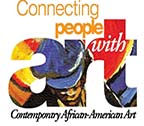Aichi Triennale
Mayunkiki Photographer Tegen Kimbley, courtesy of Ikon Gallery
Exploring the presence of her traditional Ainu culture in contemporary life is central to the work of Mayunkiki (born 1982), an artist, language teacher, musician and cultural worker from Asahikawa in Hokkaido, Japan. The Ainu, an Indigenous group in Japan, come from the northern part of the country and were subjected to violent policies of assimilation, displacement and forced labour in the 20th century. It was made illegal to practice Ainu cultural traditions, such as sinuye, a traditional form of tattooing for Ainu women.
Through the Ainu Policy Promotion Act of 2019, the government officially recognised Ainu people as an Indigenous group in Japan for the first time, and in 2020 the National Ainu Museum was opened in Hokkaido, the northernmost of Japan’s main islands. Despite this, discrimination and stereotyping towards those of Ainu heritage still persist. Here, Mayunkiki shares her journey to becoming an artist, her multidisciplinary practice and what to expect from her upcoming work for the Aichi Triennale 2025, which opens in Japan in September.
Have you always felt close to your Ainu culture or has it grown with age?
Both my parents are Ainu-—they have been open about my roots since I was very little, and my father always told me that I shouldn’t be ashamed. My mother was worried that I would be bullied growing up so she really tried to raise me to be a strong woman. Even within my own family there are different attitudes to our heritage—my paternal family are not open about it, but my mother’s side of the family run the oldest private museum about Ainu culture in Hokkaido, called the Kawamura Kaneto Ainu Memorial Museum, which has been at the centre of Ainu cultural activities in the city. I was familiar with dances and songs about Ainu culture from a very young age.
When did you become a practising visual artist?
I met the Australian artist Brook Andrew in 2017 and I participated in his work What’s Left Behind (2018), with a video of me performing traditional tattooing, which was shown at the 2018 Sydney Biennale. That was my first time showing my practice in an art setting. Then when Brook became the artistic director for the 2020 edition of the Biennale, he invited me as one of the participating artists, and he really encouraged me to show what I do as art. The work was really well received and led to more opportunities, including a solo show in Sapporo in 2021. That’s when I began to more deeply engage with my roots and start interviewing my family members and my closest friends. I came to realise that I could turn my daily struggles into artworks and share them with the public, and I found that to be one of the ways to deal with the difficult experiences.
Given that you’ve experienced discrimination in Japan for being Indigenous, how do you feel about participating in the Aichi Triennale 2025?
I had to think about it a lot and I was fearful of the attention it would bring. But I see this as a big opportunity to reach a wider audience. The main reason why I decided to participate in the end is because there is a train line in Aichi called the Iida Line, which my grandfather—who was a surveyor—helped to plan and build. So I thought it would be a good opportunity to do something, drawing inspiration from my grandfather.
The Aichi Arts Center in Nagoya is one of the main venues for the Aichi Triennale 2025 Courtesy Aichi Triennale
Can you describe the work?
I’m developing a new visual artwork and a stage performance, which are linked to each other and are based on my research around the Iida Line. I’m thinking about the colonisation and subsequent modernisation of Japan. Ainu people suffered from this modernisation but my grandfather actually contributed to it in many ways. The works will bridge different spaces, times and histories from my own standpoint. The performance will include me singing Ainu songs—it is important for Ainu lyrics and language to be heard in this specific area. It will also include ukouk [an Ainu style of round singing. The word “ukouk” means to take from each other] and I’m working with the musician Tact Hirose to incorporate different types of soundscapes. I’m collaborating with the duo hoshifune [made up of the masked dancer Tetsuro Koyano and the storyteller Naoka Watanabe] to bring shadow play into the performance.
What will you be performing at Art Basel Hong Kong?
I’ve never been to Hong Kong, so I want to arrive first and see how I feel there before choosing the songs that I will sing. In Ainu tradition people didn’t plan ahead what to sing and while there are songs that are made for different purposes there are, of course, no songs that were made for a trip to an art fair in Hong Kong! I think my ancestors and kamuy—the godlike figures in Ainu culture—will tell me what to sing.
• Mayunkiki will perform at the Auditorium, Hong Kong Convention & Exhibition Centre, at 11am on Friday 28 March, before a conversation with Aichi Triennale curatorial advisor Toshiaki Ishikura
• Aichi Triennale 2025: A Time Between Ashes and Roses runs 13 September-30 November. The Aichi Triennale is an urban international art festival, held every three years since 2010 across a wide region including the Aichi Arts Center in Nagoya, central Japan
Cuban activist Tania Bruguera closes down her exhibit while other artists reconfigure works to reflect the controversy
More than 70 participants including Candice Breitz and Tania Bruguera have signed a statement demanding reopening of Aichi Triennale's exhibition

